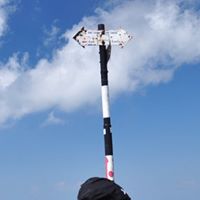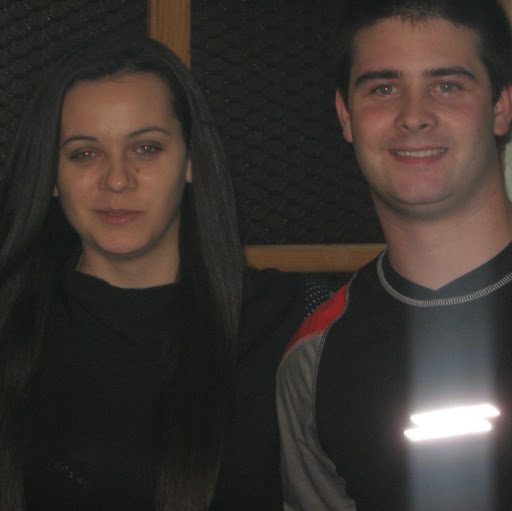Radu V Balan
age ~56
from Rockville, MD
- Also known as:
-
- Radu V Bakan
- Redu Balan
- Rajesh Balan
- Balan Radu
- Phone and address:
- 504 Nature Ln, Rockville, MD 20850
Radu Balan Phones & Addresses
- 504 Nature Ln, Rockville, MD 20850
- West Windsor, NJ
- New York, NY
- 9071 Mill Creek Rd, Levittown, PA 19054 • 2155800983 • 2675800983
- San Diego, CA
- 504 Nature Ln, Rockville, MD 20850 • 6099361630
Work
-
Position:Precision Production Occupations
Education
-
Degree:High school graduate or higher
Skills
Computer Vision • Pattern Recognition • Dynamical Systems • Machine Learning • Scientific Computing • Image Analysis • Mathematical Modeling • Applied Mathematics • Image Processing • Signal Processing • Numerical Analysis • Algorithms • Differential Equations • Latex • Artificial Intelligence
Industries
Research
Resumes

Radu Balan
view sourceLocation:
Washington, DC
Industry:
Research
Skills:
Computer Vision
Pattern Recognition
Dynamical Systems
Machine Learning
Scientific Computing
Image Analysis
Mathematical Modeling
Applied Mathematics
Image Processing
Signal Processing
Numerical Analysis
Algorithms
Differential Equations
Latex
Artificial Intelligence
Pattern Recognition
Dynamical Systems
Machine Learning
Scientific Computing
Image Analysis
Mathematical Modeling
Applied Mathematics
Image Processing
Signal Processing
Numerical Analysis
Algorithms
Differential Equations
Latex
Artificial Intelligence
Name / Title
Company / Classification
Phones & Addresses
Associate Professor
University of Maryland, College Park
Colleges and Universities
Colleges and Universities
2181 Glenn Martin Hall, College Park, MD 20742
3014051000
3014051000
Us Patents
-
Estimator Of Independent Sources From Degenerate Mixtures
view source -
US Patent:6343268, Jan 29, 2002
-
Filed:Dec 1, 1998
-
Appl. No.:09/203115
-
Inventors:Radu Balan - New York NY
Alexander Jourjine - Princeton NJ
Justinian Rosca - Monmouth Junction NJ -
Assignee:Siemens Corporation Research, Inc. - Princeton NJ
-
International Classification:G10L 2102
-
US Classification:704228, 704226, 704233, 381 941, 381 942, 706 22
-
Abstract:A system that reconstructs independent signals from degenerate mixtures estimates independent Auto Regressive (AR) processes from their sum. The system includes an identification system and an estimator. A mixture of two signals is inputted into the system and through the identifying and filtering processes, two estimates of the original signals are outputted. The identification system includes an ARMA identifier, a computation of autocovariance coefficients, an initializer and a gradient descent system. The estimator includes filtering.
-
Optimal Ratio Estimator For Multisensor Systems
view source -
US Patent:6577966, Jun 10, 2003
-
Filed:Jun 21, 2001
-
Appl. No.:09/886872
-
Inventors:Radu Victor Balan - Levittown PA
Justinian Rosca - Princeton NJ -
Assignee:Siemens Corporate Research, Inc. - Princeton NJ
-
International Classification:G06F 500
-
US Classification:702 76, 702 77, 702 79, 702176, 702179
-
Abstract:A signal processing technique can be effectively used for source separation, signal enhancement, and noise reduction when using a twin microphone system. The class of stochastic signals for which ratio-estimates can be computed from histograms is defined. This class fits real-world signals of interest such as voice signals. Theoretical computation in closed form of the optimal estimator for this class of signals is disclosed. Two practical implementation solutions are disclosed, as is a practical solution to exploit an echoic environment model. Furthermore, two novel techniques for signal demixing are presented. The application of the optimal estimator and the suboptimal estimator to the case of more than two channels is disclosed.
-
Optimal Ratio Estimator For Multisensor Systems
view source -
US Patent:6868365, Mar 15, 2005
-
Filed:May 9, 2003
-
Appl. No.:10/435206
-
Inventors:Radu Victor Balan - Levittown PA, US
Justinian Rosca - Princeton NJ, US -
Assignee:Siemens Corporate Research, Inc. - Princeton NJ
-
International Classification:G06F015/17
-
US Classification:702180, 702177, 702179, 702183, 702197
-
Abstract:A signal processing technique can be effectively used for source separation, signal enhancement, and noise reduction when using a twin microphone system. The class of stochastic signals for which ratio-estimates can be computed from histograms is defined. This class fits real-world signals of interest such as voice signals. Theoretical computation in closed form of the optimal estimator for this class of signals is disclosed. Two practical implementation solutions are disclosed, as is a practical solution to exploit an echoic environment model. Furthermore, two novel techniques for signal demixing are presented. The application of the optimal estimator and the suboptimal estimator to the case of more than two channels is disclosed.
-
Method Of Denoising Signal Mixtures
view source -
US Patent:6901363, May 31, 2005
-
Filed:Oct 18, 2001
-
Appl. No.:09/982497
-
Inventors:Radu Victor Balan - Levittown PA, US
Justinian Rosca - Princeton Junction NJ, US -
Assignee:Siemens Corporate Research, Inc. - Princeton NJ
-
International Classification:G01L021/02
G01L011/02
H04B015/00 -
US Classification:704226, 704233, 381 943, 381 947
-
Abstract:Disclosed is a method of denoising signal mixtures so as to extract a signal of interest, the method comprising receiving a pair of signal mixtures, constructing a time-frequency representation of each mixture, constructing a pair of histograms, one for signal-of-interest segments, the other for non-signal-of-interest segments, combining said histograms to create a weighting matrix, rescaling each time-frequency component of each mixture using said weighting matrix, and resynthesizing the denoised signal from the reweighted time-frequency representations.
-
Method And Apparatus For Noise Filtering
view source -
US Patent:6952482, Oct 4, 2005
-
Filed:Dec 5, 2001
-
Appl. No.:10/007460
-
Inventors:Radu Victor Balan - Levittown PA, US
Justinian Rosca - Princeton NJ, US -
Assignee:Siemens Corporation Research, Inc. - Princeton NJ
-
International Classification:H04B015/00
-
US Classification:381 941, 381 942, 381 92
-
Abstract:Disclosed is an apparatus for and a method of filtering noise from a mixed sound signal to obtained a filtered target signal, comprising the steps of inputting the mixed signal through a pair of microphones into a first channel and a second channel, separately Fourier transforming each said mixed signal into the frequency domain, computing a signal short-time spectral amplitude |Ŝ| from said transformed signals, computing a signal short-time spectral complex exponential efrom said transformed signals, where arg(S) is the phase of the target signal in the frequency domain, computing said target signal S in the frequency domain from said spectral amplitude and said complex exponential.
-
Apparatus And Method For Estimating The Direction Of Arrival Of A Source Signal Using A Microphone Array
view source -
US Patent:7084801, Aug 1, 2006
-
Filed:Jun 5, 2003
-
Appl. No.:10/454917
-
Inventors:Radu Victor Balan - West Windsor NJ, US
Justinian Rosca - Princeton NJ, US -
Assignee:Siemens Corporate Research, Inc. - Princeton NJ
-
International Classification:H03M 1/12
-
US Classification:341155, 381 92
-
Abstract:An apparatus for estimating the direction of arrival (“DOA”) of a source signal includes microphones for transducing the source signal, amplifiers in signal communication with a corresponding one of the microphones, analog-to-digital converters in signal communication with a corresponding one of the amplifiers, and a digital processor in signal communication with the analog-to-digital converters for estimating the direction of arrival of the source signal; where a corresponding method for estimating the DOA of the source signal at one of several microphones includes estimating the measured signal spectral covariance matrix (“Rx”), and estimating the angle of the DOA responsive to the measured signal spectral covariance matrix.
-
Real-Time Audio Source Separation By Delay And Attenuation Compensation In The Time Domain
view source -
US Patent:7088831, Aug 8, 2006
-
Filed:Dec 6, 2001
-
Appl. No.:10/010255
-
Inventors:Justinian Rosca - Princeton NJ, US
Ning Ping Fan - Plainsboro NJ, US
Radu Victor Balan - Levittown PA, US -
Assignee:Siemens Corporate Research, Inc. - Princeton NJ
-
International Classification:H04R 3/00
-
US Classification:381 92, 381 66, 702190
-
Abstract:A system is provided for separating two audio channels recorded by an array of microphones. The system includes a calibration module for normalizing gain levels between a plurality of channels on each of a plurality of date frames, wherein each data frame is expressed in terms of time. The system further includes a delay parameter estimation module for accepting an output comprising the normalized channels, and estimating a delay parameter for a plurality of data frame sizes over a plurality of lag times, and sorting delays to generate corresponding source separated outputs.
-
Method And Apparatus For Noise Filtering
view source -
US Patent:7110944, Sep 19, 2006
-
Filed:Jul 27, 2005
-
Appl. No.:11/191105
-
Inventors:Radu Victor Balan - Levittown PA, US
Justinian Rosca - Princeton NJ, US -
Assignee:Siemens Corporate Research, Inc. - Princeton NJ
-
International Classification:G10L 21/02
-
US Classification:704226, 704200
-
Abstract:A method of filtering noise from a mixed sound signal to obtain a filtered target signal, includes inputting the mixed signal through a plurality of sensors into a plurality of channels, separately Fourier transforming each the mixed signal into the frequency domain, computing a signal short-time spectral amplitude |Ŝ| from the transformed signals, computing a signal short-time spectral complex exponential efrom said transformed signals, where arg(S) is the phase of the target signal in the frequency domain, computing said target signal S in the frequency domain from said spectral amplitude and said complex exponential, and computing a spectral power matrix and using the spectral power matrix to compute the spectral amplitude and the spectral complex exponential.

Radu Balan
view sourceFriends:
Adriana Radu, Mario Rossi, Ungureanu Angela, Efta Costin

Radu Balan
view sourceFriends:
Tanasa Stefan, Dorin Dorinel, Mihaela Mitici, Claudya Ganea

Radu Balan
view source
Radu Balan
view source
Radu Balan
view source
Radu Balan
view source
Radu Balan
view source
Radu Balan
view sourceFlickr
Googleplus

Radu Balan

Radu Balan

Radu Balan

Radu Balan
Education:
Professional Skills Institute - Electrotech, Sapoca University
About:
Hi, how are you! sos sos sos sos sosos
Bragging Rights:
Terminal liceul

Radu Balan

Radu Balan

Radu Balan

Radu Balan
Plaxo

Radu BALAN
view sourceTotal Trade benelux

Radu Balan
view sourcelogistica at ICCO Systems SRL
Youtube
Get Report for Radu V Balan from Rockville, MD, age ~56








